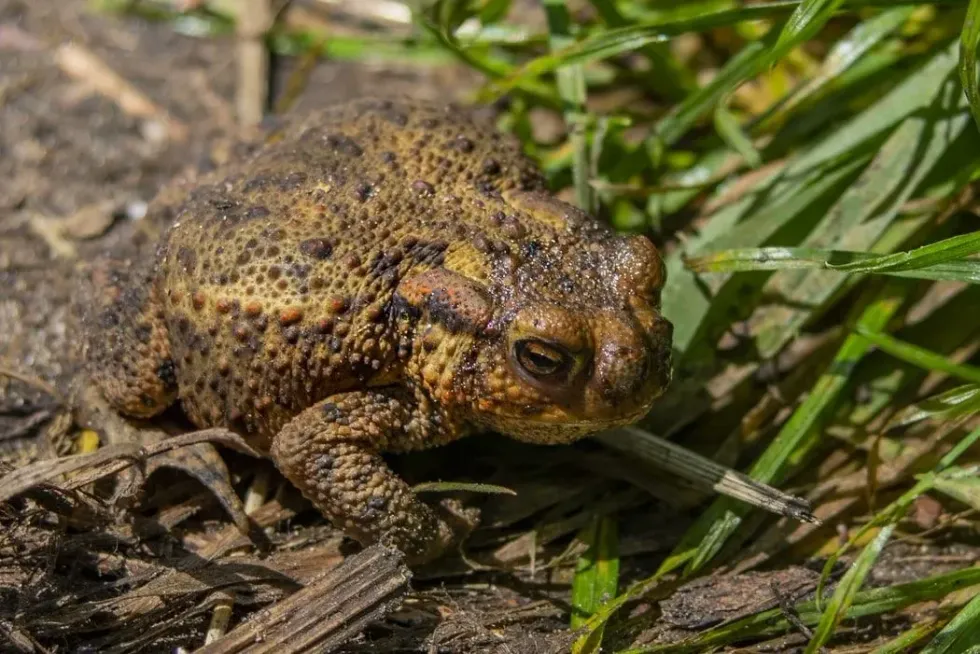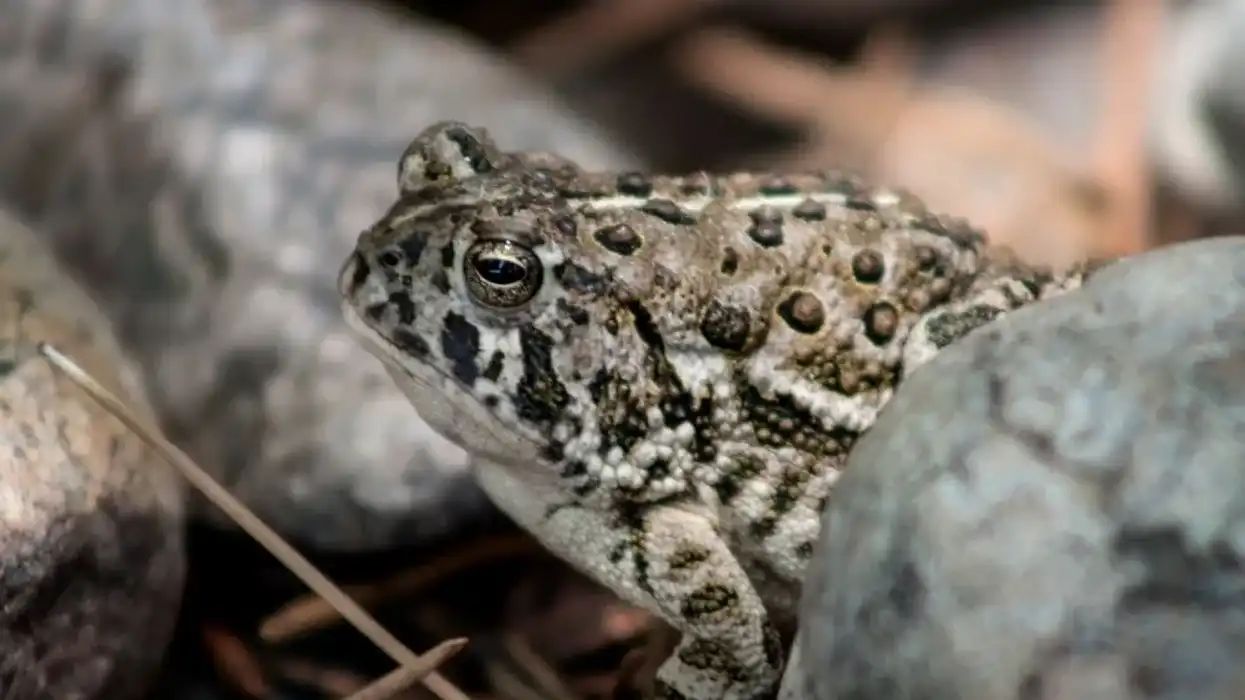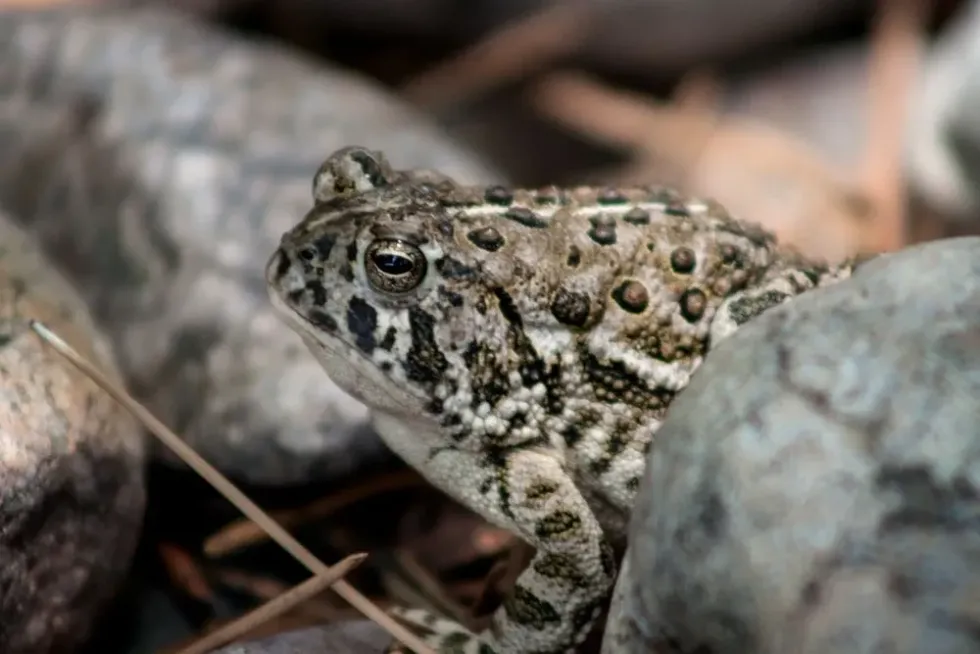Fun Wyoming Toad Facts Facts For Kids

Content
- What type of animal is a Wyoming toad?
- What class of animal does a Wyoming toad belong to?
- How many Wyoming toads are there in the world?
- Where does a Wyoming toad live?
- What is a Wyoming toads habitat?
- Who do Wyoming toads live with?
- How long does a Wyoming toad live?
- How do they reproduce?
- What is their conservation status?
- What do Wyoming toads look like?
- How cute are they?
- How do they communicate?
- How big is a Wyoming toad?
- How fast can a Wyoming toad move?
- How much does a Wyoming toad weigh?
- What are the male and female names of the species?
- What would you call a baby Wyoming toad?
- What do they eat?
- Are they poisonous?
- Would they make a good pet?
- Did you know...
- Do Wyoming toads have good eyesight?
- What are Wyoming toad's natural predators?
Wyoming toads, or Bufo hemiophrys, were discovered by Dr. George T. Baxter in 1946. Originally, the toad was believed to be a subspecies of Canadian toads. The scientific name of Wyoming toads is Anaxyrus baxteri.
Wyoming toads historic range is the flood plains of the little and big Laramie Rivers, as well as any ponds located within 30 mi (48 km) of Laramie, Wyoming. Other toads that live in Wyoming are baby horny Wyoming toad, Wyoming horned toad, Wyoming boreal toad, Wyoming spadefoot toad and Wyoming woodhouse toads.
However, there are no Wyoming toads in the wild today.
They exist only in captivity in the Mortenson Lake National Wildlife Refuge located in Wyoming, USA as part of the wildlife conservation program. Even though they are slowly being reintroduced back into the wild, they are not self-sustaining and are therefore classified as Extinct in the wild.
Native to southeast Wyoming, this toad species relies on the movement of their prey because of their poor eyesight. To ward off their predators, they secrete poison from their necks. This can either give an upset stomach to their predators or kill them.
If you enjoyed these facts abouy Wyoming toads, you may also check out the fact files on olm and Chinese giant salamander.
Wyoming Toad Interesting Facts
What type of animal is a Wyoming toad?
Wyoming toads, also known as Anaxyrus baxteri, are a type of toad.
What class of animal does a Wyoming toad belong to?
Wyoming toads belongs to the class of amphibians.
How many Wyoming toads are there in the world?
Wyoming toads are only found in the Albany County of Wyoming, United States. Their conservation status is ‘extinct in the wild’.
However, there is an unknown number of Wyoming toads living in captivity in sanctuaries and zoos as part of wildlife conservation programs. Several efforts are being made to increase their population by captive breeding.
These processes are taking place in the Cheyenne Mountain Zoo and Mortenson Lake National Wildlife Refuge as part of Wyoming Toad Conservation programs. After they breed the toads, they release them into their natural environment.
Where does a Wyoming toad live?
Wyoming toads, Bufo baxteri, live in floodplains and grass edges of creeks, lakes, and ponds. They also use ground burrows, known as hibernaculas, frequently.
What is a Wyoming toads habitat?
The most common habitat of a Wyoming toad, Bufo baxteri, is a floodplain. This is a generally flat land right next to a stream or a river. It stretches from the outer edges of the valley to the banks of the river.
Who do Wyoming toads live with?
Even though toads are usually solitary animals, a large number of toads will converge during the breeding season. This is where males start competing to mate with females. The female species will lay eggs in gelatinous strings that later hatch into tadpoles.
How long does a Wyoming toad live?
Wyoming toads live up to be around eight years old. It is important to note that Wyoming toads are vulnerable to many pesticides that are sprayed in the environment to kill mosquitoes. They are also vulnerable to chytrid fungal infection.
How do they reproduce?
The Wyoming toad species comes out of their hibernation in May. This is when they move to a nearby lake or pond for breeding. Male toads will start croaking and chirping in order to attract female Wyoming toads to the area. Both males and females will have a different mate each breeding season.
After the male and female toads have mated, the female will lay eggs in the water. Each string of eggs can have up to thousands of eggs on it.
The egg of a toad is as thin as a single stick of spaghetti. After about one month, the eggs hatch into tadpoles, and then they develop into toads.
Tadpoles are a young and growing Wyoming toad. Once the female toad has laid her eggs in a shallow part of a pond or lake, the young toads have to survive on their own.
After they are hatched from the eggs, they eat vegetation pieces floating in the area. Eventually, they come out of the water in order to find a home on land.
What is their conservation status?
The official conservation status of Wyoming toads is Extinct in the wild. Most of them live in captivity in zoos, but their exact number is unknown.
Wyoming Toad Reintroduction Program is one of the conservation groups that have been captive breeding these toads and releasing them into the wild as they understand how important these toads are to the ecosystem.
Wyoming Toad Fun Facts
What do Wyoming toads look like?
The snout length of Wyoming toads is around 2.2 in (5 cm). Their dorsal surface has rounded warts that are medium in size compared to Boreal toads (Bufo boreas) and Great Plains toads (Bufo cognatus).
Their cranial crests fuse to create an elongated boss, paired ridges, or a ridge with a median groove.
There are some other significant features of a Wyoming toad, including a cornified boss, absent or indistinct postorbital ridges, a round tympanum that is smaller than their eye and well-developed and cutting tubercles on their hindfoot.
They also have gray, dark brown, or greenish background color with small dark blotches, an indistinct median line, a spotted belly, the males have a dark throat and some individual toads have light lateral stripes. According to photographic analysis, it has been proven that variations in the wart patterns and skin color can be used for identifying individual toads.

How cute are they?
These toads can be considered very cute or not so cute. It all depends on an individuals taste.
How do they communicate?
Just like frogs, Wyoming toads have vocal cords. But, they also have a vocal sac that is comparable to a inflatable amplifier. In order to make a call, a toad breathes in and closes their nostrils. They also have a distinctive mating call that attracts female toads.
How big is a Wyoming toad?
Wyoming toads can grow up to 2.2 in (5 cm) in length.
How fast can a Wyoming toad move?
Wyoming toads can move up to 1 mi (1.8 km) every night.
How much does a Wyoming toad weigh?
The average weight of a Wyoming toad is 0.1 lb (2-3 oz). This is equal to the weight of one and a half tennis balls.
What are the male and female names of the species?
There are no specific names for the males and females of this species. They are known as female Wyoming toads and male Wyoming toads.
What would you call a baby Wyoming toad?
Baby Wyoming toads are called tadpoles.
What do they eat?
Adult Wyoming toads are carnivores that eat ants, beetles, worms, and spiders. In short, they eat small insects that can be commonly found in the floodplains environment.
Adult Wyoming toads can eat around 100 insects in just one night. However, tadpoles aren’t carnivores. They are still developing into full-grown toads and can only eat small pieces of vegetation that floats by.
Wyoming toads have an instinct that tells them what is safe to eat in their natural habitat. However, if they do eat an insect that has a pesticide or insecticide in its system, the Wyoming toad will die as well.
Are they poisonous?
There is poison in the neck gland of Wyoming toads. If predatory animals grab the toad, they release the poison in order to escape.
Would they make a good pet?
These animals are Extinct in the wild, and many efforts are taking place to ensure their conservation. Because of this, it is not advised to keep these toads as a pet.
Did you know...
On June 1, 2016, 900 Wyoming toads that were bred in captivity were released into the wild at three different sites along the Little Laramie River of Wyoming as part of their captive breeding program.
This was the largest release of adult amphibians into the natural habitat facilitated by the National Fish Hatchery System of the U.S. Fish and Wildlife Service, US.
Biologists have been releasing juvenile Wyoming tadpoles and toadlets into the wild since 1995, but the juveniles have not been able to generate self-sustaining wild populations.
However, this time, adult toads were released in hopes that since they were larger and more robust, they would have a better chance of surviving in the wild. According to the recovery coordinator of U.S.
Fish and Wildlife Service’s Wyoming Ecological Services Field Office, this was the first large-scale release of adult Wyoming toads and they are hoping that this will help overcome some issues occurring with their population.
Wyoming toads that live under the willows or in beaver ponds in northwest Wyoming are capable of curing themselves of a fungal infection. In a way, what Wyoming toads do is the same as when humans rest or take medicine when we are sick.
The difference is that these toads hop into the sun to make themselves feel better. However, Wyoming toads don’t like sun exposure. Being in an open area also increases the possibility of predation by hungry coyotes or crows.
A non-native, deadly fungus named Chytrid wiped out the population of Boreal toads in northern New Mexico, Colorado, and southern Wyoming in just two to three years and left the Wyoming toad endangered.
A long time ago, Wyoming toads were commonly found in the small range of Wyoming’s Albany County. However, in the 1970s, the toad population plummeted.
The main culprit behind this was a disease caused by the Batrachochytrium dendrobatidis, or the chytrid fungus, known as chytridiomycosis. This condition has decimated several amphibian populations all over the globe. Other potential threats to Wyoming toads include pesticides and habitat alteration.
The U.S. Fish and Wildlife Service only listed the Wyoming toads as an Endangered species in 1986 and by then, they were almost Extinct. However, in 1987, a single population of Wyoming toads was rediscovered in Albany County at Mortenson Lake.
According to a paper published in the Bioscience journal in 2006, their population dwindled a lot over the next few years. Eventually, the last of these amphibians were taken out of the wild in order to save them.
According to a revised recovery plan published by the U.S. Fish and Wildlife Service in 2015, from 1995 to 2013, biologists have released over 188,000 captive-bred tadpoles and toadlets back into the wild. However, only a few of these juveniles managed to breed.
These were also producing small and not very robust toads. When the first winter season arrived, they were already stressed, and then they were immediately hit by the chytrid fungus. Therefore it's safe to say that this conservation method didn't work very well.
The scientists then learned that they can generate tadpoles en masse.
However, they didn’t have the resources until 2016 to raise the toads to adulthood. Wyoming toads have a large appetite and caretakers have to vary the diet of their creatures in order to make sure that they are able to recognize their food in the wild.
Thanks to the Cooperative Recovery Initiative Grant offered by the US Fish and Wildlife Service, wildlife professionals were able to invest in this effort on a large scale and fund a new facility for rearing toads at the Saratoga National Fish Hatchery.
This facility is capable of housing hundreds of Wyoming toads at a time, nurturing them all year until they become an adult.
The 900 toads released in June 2016 were the first toads that were raised there. Before they were released into the wild, the captive-reared toads were placed in protected outdoor enclosures so that they were able to acclimate to their new environment safely.
A similar toad-rearing project, on a smaller scale, is at the Colorado Springs’ Cheyenne Mountain Zoo.
Researchers are working hard to find the best way of reintroducing Wyoming toads to the wild. Out of 900 toads, some were dropped right into their new habitat, which is a process called hard release.
Others were given a gentler introduction with a three-day-long outdoor enclosure, a process known as a soft release. This was done to give a head start to the Wyoming toads.
They were given time to acclimate safely to their new environment. Then, the researchers assessed whether providing the soft release helped monitor the population or not by identifying individual toads through their implanted microchips.
All of this is done to ensure that there is an influx of adult toads in the wild that will spur some breeding and consistently increase their population.
Do Wyoming toads have good eyesight?
No, Wyoming toads are known to have poor eyesight. Because of this, they are not able to detect motionless insects and they can only identify insects that walk on the ground or fly.
What are Wyoming toad's natural predators?
There are several natural predators of a Wyoming toad including weasels, skunks, badgers, coyotes, herons, and mink. Sometimes, they even fell prey to domestic cats that wander into their environment.
They are quick and can grab the toads easily before the toad has an opportunity to release their poison. Wyoming toads are also vulnerable to Chytrid fungal infections which can harm their lungs and kill them. Because of the use of insecticides for killing mosquitoes, the population of Wyoming toads has greatly reduced.
Here at Kidadl, we have carefully created lots of interesting family-friendly animal facts for everyone to discover! Learn more about some other amphibians including spotted salamander, or tiger salamander.
You can even occupy yourself at home by drawing one of our wyoming toad coloring pages.
We Want Your Photos!
More for You
Bachelors in Business Administration

Aashita DhingraBachelors in Business Administration
Based in Lucknow, India, Aashita is a skilled content creator with experience crafting study guides for high school-aged kids. Her education includes a degree in Business Administration from St. Mary's Convent Inter College, which she leverages to bring a unique perspective to her work. Aashita's passion for writing and education is evident in her ability to craft engaging content.
Bachelor of Law

Abdulqudus MojeedBachelor of Law
A versatile professional with a passion for creative writing and technology. Abdulqudus is currently pursuing his Bachelor of Law from the University of Lagos and has experience as a tutor, intern assistant, and volunteer. He possesses strong organizational skills and is a detail-oriented person.
Disclaimer
1) Kidadl is independent and to make our service free to you the reader we are supported by advertising. We hope you love our recommendations for products and services! What we suggest is selected independently by the Kidadl team. If you purchase using the Buy Now button we may earn a small commission. This does not influence our choices. Prices are correct and items are available at the time the article was published but we cannot guarantee that on the time of reading. Please note that Kidadl is a participant in the Amazon Services LLC Associates Program, an affiliate advertising program designed to provide a means for sites to earn advertising fees by advertising and linking to Amazon. We also link to other websites, but are not responsible for their content.
2) At Kidadl, we strive to recommend the very best activities and events. We will always aim to give you accurate information at the date of publication - however, information does change, so it’s important you do your own research, double-check and make the decision that is right for your family. We recognise that not all activities and ideas are appropriate for all children and families or in all circumstances. Our recommended activities are based on age but these are a guide. We recommend that these ideas are used as inspiration, that ideas are undertaken with appropriate adult supervision, and that each adult uses their own discretion and knowledge of their children to consider the safety and suitability. Kidadl cannot accept liability for the execution of these ideas, and parental supervision is advised at all times, as safety is paramount. Anyone using the information provided by Kidadl does so at their own risk and we can not accept liability if things go wrong.
3) Because we are an educational resource, we have quotes and facts about a range of historical and modern figures. We do not endorse the actions of or rhetoric of all the people included in these collections, but we think they are important for growing minds to learn about under the guidance of parents or guardians.







